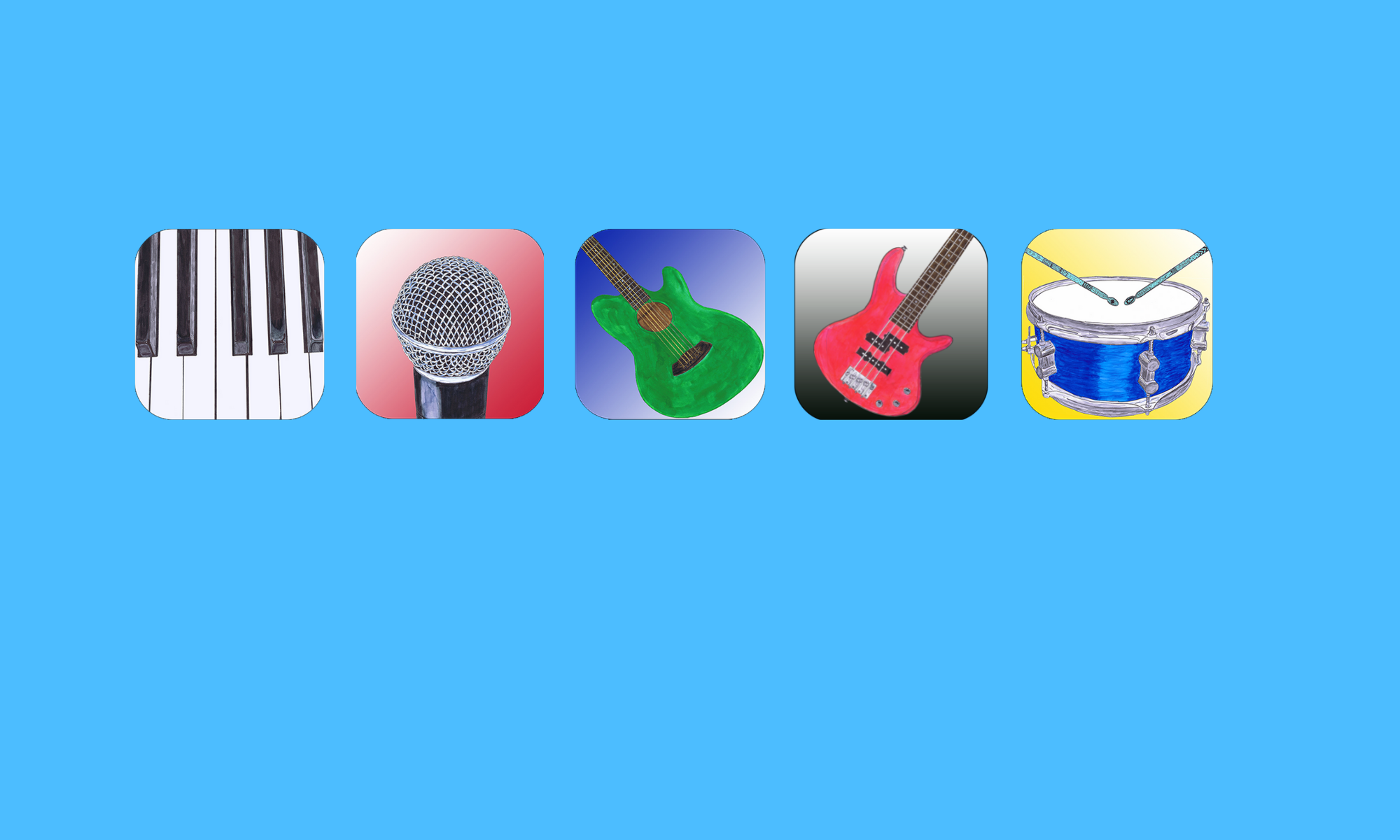I’m excited to announce the supplemental learning content I’ve created for Piano on Quizlet! I have created 43 sets so far and will be continuing to add more content for piano and also will create sets to supplement other instrument learning.
In case you are not familiar with Quizlet, it is a flashcard platform online and through mobile apps for students to learn and study information. It has study sets on all kinds of subjects for teachers and students to use.
Teachers can create ‘classes’ on Quizlet where they put ‘study sets’ for the students in their class to use. For each study set that a teacher creates, Quizlet plugs the information (terms, definitions, images and audio) into flash cards and games that students can use to learn and drill.
Students can start with untimed multiple choice ‘tests’, ‘write’ or ‘flash cards’ to learn information and then move on to timed games, like ‘match’ or ‘gravity’ (‘gravity’ is only on the computer version) to get information lightening fast. Complete mastery of note-recognition and other musical information is what allows musicians to read and play new music in real time. This is a fun tool that pairs with Treblemakers Piano Method Books and other curriculum to strengthen learning. I’ve always liked using flash cards in my lesson plans and this is even better.
I’ve created sets using the same learning strategy used in my teaching and method books.
- Introduce small subset of information. (3-4 things)
- Drill and use till mastered.
- Introduce another small subset.
- Drill and use till mastered.
- Combine sets.
- Drill and use combined set.
- REPEAT!
I’ve included the free link below for anyone to join and use my class. This can help you track progress, know what information is mastered and what needs more attention. Students can also compete against themselves and others in my class for fastest times.
https://quizlet.com/join/MHjsy4aQz
Treblemakers Piano Class Quizlet Sets Available Now:
Reading 1 RH C, D, E- Pairs with C,D,E Songs in Treblemakers Piano Method Book 1.
Reading 2 LH C,B,A- Pairs with C,B,A Songs in Treblemakers Piano Method Book 1
Reading 3 A-E (Set 1 & 2 combined) RH & LH- Pairs with first half of 5 Finger Originals in Treblemakers Piano Method Book 1
Reading 4 F & G in RH & LH- Pairs with second half of 5 Finger Originals in Treblemakers Piano Method Book 1
Reading 5 LH F below middle C-RH G above middle C (sets 3 & 4 combined)- Pairs with 5 Finger Classics in Treblemakers Piano Method Book 1
Reading 6 RH F above middle C-medium high C
Reading 7 LH medium low C-G- Pairs with chord outline, parallel motion and chord pattern sections in Treblemakers Piano Method Book 1.
Reading 8 LH medium low C-RH medium high C (sets 1-7 combined)- Pairs with Treblemakers Piano Method Book 2 and a vast amount of supplemental music.
Reading 9 Anchor C’s- Pairs with Anchors Songs in Treblemakers Piano Method Book 2. Drilling on anchor C’s allows students to always have a well-known note nearby to figure out unknown or less solid notes from.
Reading 10 LH low F-low B
Reading 11 RH D-G above medium high C
Reading 12 LH low F-RH high G (sets 1-11 combined)
Reading 13 LH low C-E
Reading 14 RH high A-C
Reading 15 LH low C-medium low C
Reading 16 RH medium high C-high C
Reading 17 LH low C-RH high C (sets 1-16 combined)
Key Signature Major 1 (C,G,D,A)
Key Signature Major 2 (E,B,F#,C#)
Key Signature Major 3 all sharps (sets 1 & 2 combined)
Key Signature Major 4 (F,Bb,Eb,Ab)
Key Signature Major 5 (Db,Gb,Cb)
Key Signature Major 6 all flats (set 4 & 5 combined)
Key Signature Major 7 all sharps & flats (Sets 1-6 combined)
Major Scales 1 (C,G,D,A) How many sharps?
Major Scales 2 (E,B,F#,C#) How many sharps?
Major Scales 3 (set 1 & 2 combined) How many sharps?
Major Scales 4 (F,Bb,Eb,Ab )How many flats?
Major Scales 5 (Db,Gb,Cb) How many flats?
Major Scales 6 (set 4 & 5 combined) How many flats?
What is the relative minor? 1 (C,G,D,A)
What is the relative minor 2? (E,B,F#,C#)
Note Values 1 How many counts? (whole, half, quarter, eighth)
Note Values 2 How many counts? (sixteenth, dotted half, dotted quarter)
Note Values 3 How many counts? (set 1 & 2 combined)
Note Values 4 How many counts? (rests-whole, half , quarter, eighth)
What kind of note? 1 (whole, half, quarter, eight)
Chords 1: What numbers of the scale do they come from? (triads)
Chords 2: What numbers of the scale do they come from? (triads)
Chords 3: What numbers of the scale do they come from? (triads set 1 & 2 combined)
Chords 4: What numbers of the scale do they come from? (7ths)
Chords 5: What numbers of the scale do they come from? (7ths)
Chords 6: What numbers of the scale do they come from? (7ths set 4 & 5 combined)








